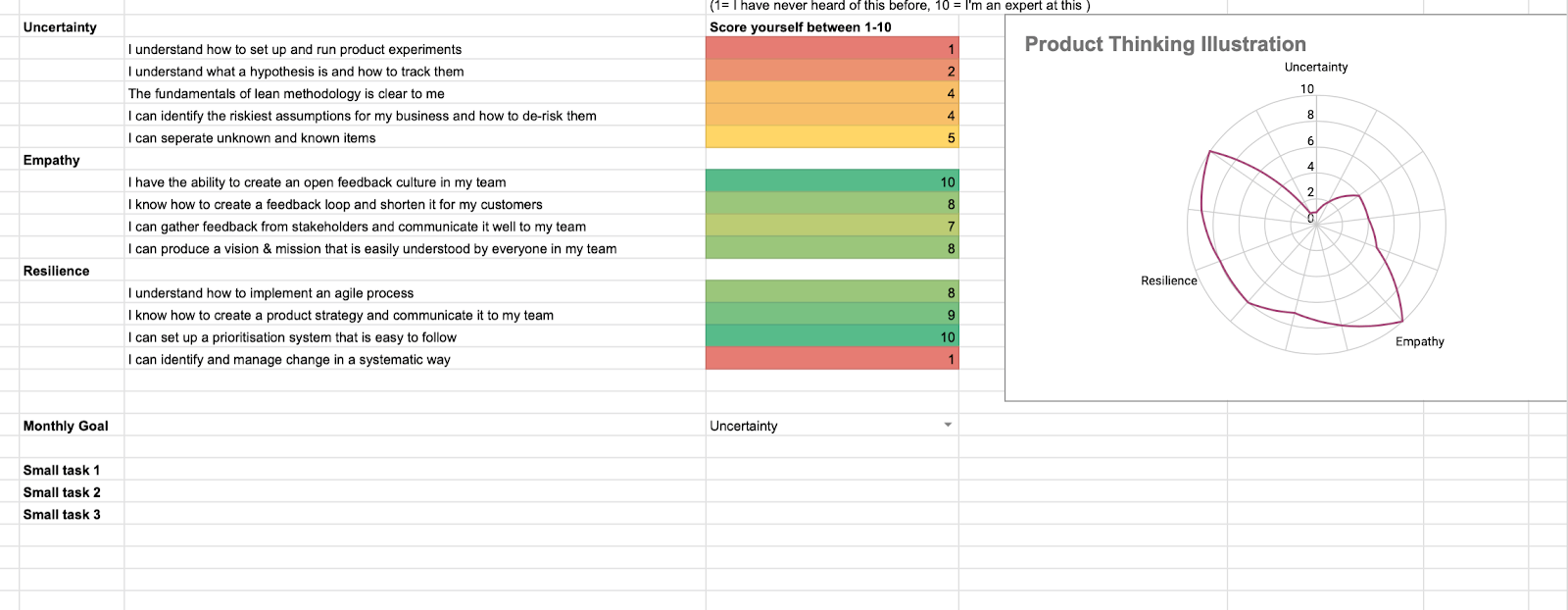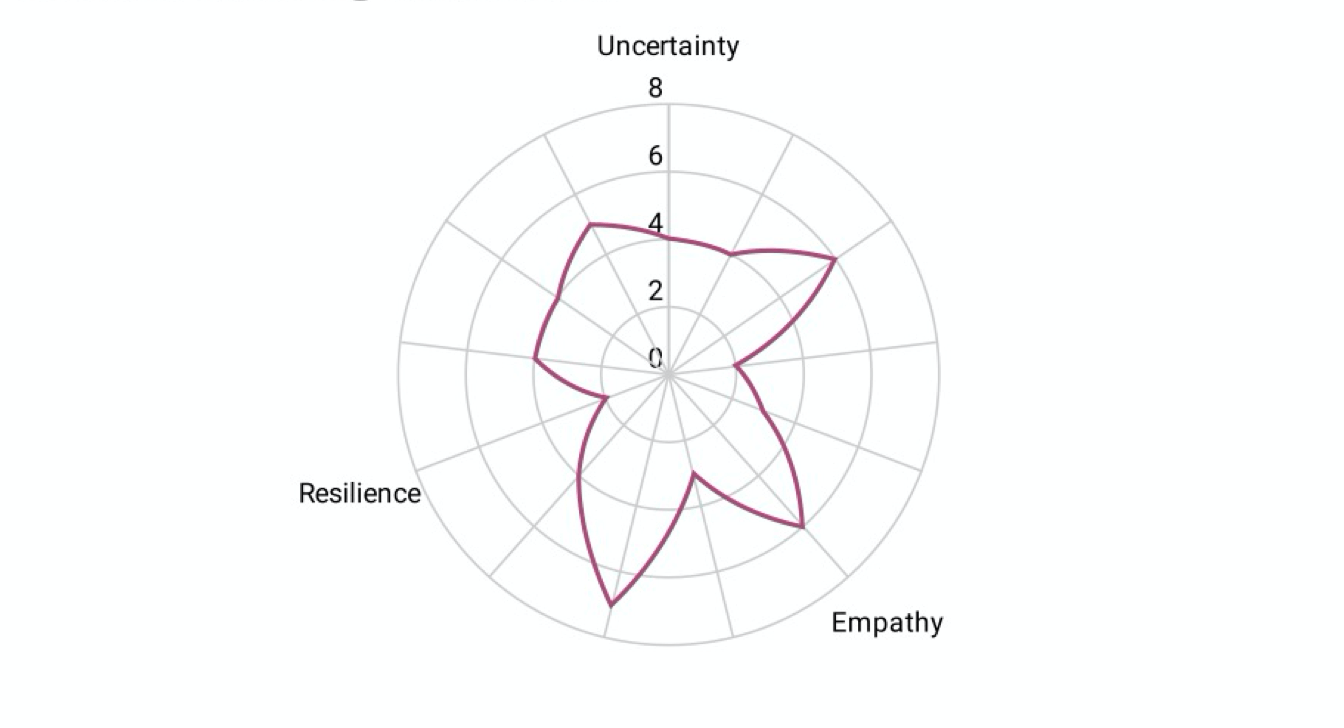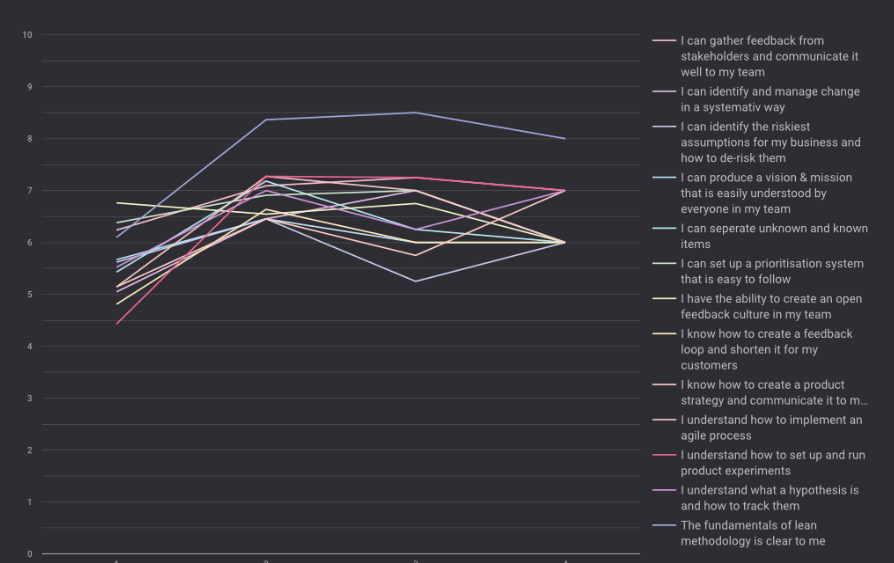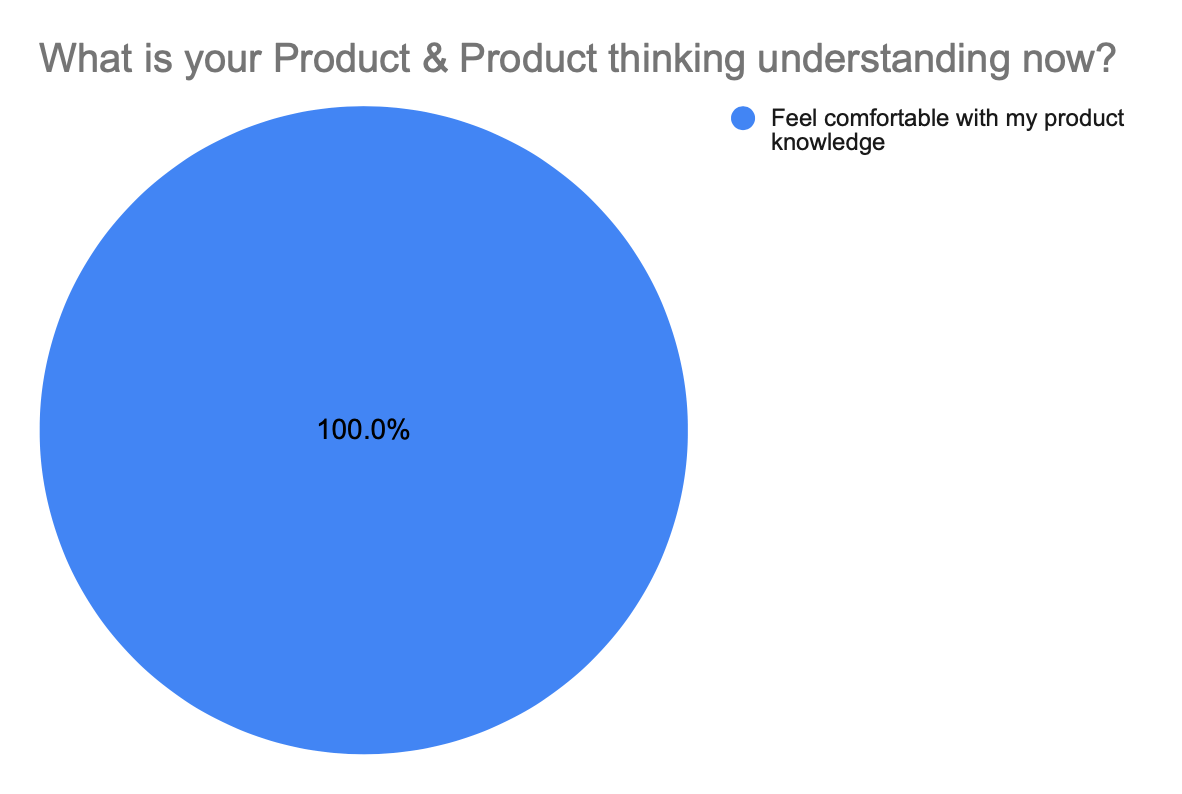A Product Coaching Framework to Foster Product Thinking [Mind the Product]

At Founders Factory we’ve created and implemented a framework for our product coaching practice based on the hypothesis I wrote about in Mind the Product last year for why product thinking needs to be the future of product management and why product coaching is how we get there.
We’ve gathered data from over 20 coachees and started a Slack channel to discuss product coaching with the wider product community. This is what we learned.
Create an Easy System and way of Working
My main hypothesis was that if you can coach product at scale, you can create product-led people and organisations. But I needed a way to both capture data and focus the coaching to measure what impact it had. We introduced a framework MVP to do this.
What do I mean by a “framework”? A set of rules that defines how you should work? I wanted to define how product coaching works at Founders Factory, and this meant taking my hypothesis and making it into a product, something that could create value and capture data to improve the product coaching practice.
Our framework looks like this:
Assessment + Weekly Cadence + Monthly Reassessment = Framework
This framework is a manifestation of the coaching tools and mindsets I outlined in my last post, focusing on both theory and practice.
Create a Tool to Focus Your Effort
As part of the framework, we decided we needed a way to capture data and to help us create focus for both us and the person we coach. The tool became both a way to triage the coaching effort and also a way of gathering data to improve our practice.
In my previous post I suggested dividing up product thinking into three components – Uncertainty, Empathy and Resilience. I also showed a few examples of tools you can use to coach each of them. In the self-assessment tool we created, I’ve grouped the questions for each component together so that the coachee can assess how comfortable they are with each of them.
This is what it looks like: a spreadsheet that combines self-assessment with triage for the coach. It is divided into three; self-assessment, radar diagram and goals plus small tasks. This is the central place we go back to for each weekly or monthly coaching session.
You can look at the spreadsheet (click to enlarge the image), or make a copy of it here.

Establish a Cadence That Works for you
In my previous post, I discussed how I took inspiration from ZPD (the Zone of Proximal Development) and scaffolding as part of the coaching framework. This is the idea of creating a monthly goal with small repeatable tasks to reach that goal. The main idea behind a cadence in between check-ins and a monthly goal was to be able to identify and focus the coaching on what both the coach and coachee think are the most important and impactful things to work on, both in theory and in practice.
Triage and Data Gathering Tool
As part of the implementation of the framework, we listened to some of the feedback from my previous post (thanks Zane Harker) about ZPD and how we could use it to further help our coaching. As we primarily coach non-product managers or people new to product management, it was clear that we needed a way to identify what impact our coaching could have on increasing their product thinking. So we introduced a triage tool within the self-assessment so that we could gauge their progress within three to six months of coaching.
This is extremely helpful, especially in environments where you have to make quick decisions. The triage tool allows us to understand within a couple of months whether a startup founder can be the product founder or if someone else needs to be hired. Doing it this way also helps the founder to realise their gaps and the kind of product person they need in their team.
In a big organisation, you could use this to understand what level product managers could get to in their product thinking and to quantify the amount of support the coachee might need. That way you can easily see a difference across your organisation and move towards being more product led.
The self-assessment tool helps both the coach and the coachee to identify gaps in knowledge and where help can be applied. This is best shown in a radar diagram:


What did we Learn?
In theory, there’s no difference between theory and practice. In practice there is Benjamin Brewster
This famous quote has been attributed to many people and is very real when it comes to product management. As the product discipline develops, it’s important to also realise that product is a practice even though lots of our tools are based on theory (including my coaching framework). It was therefore important to me that product coaching is anchored in theory but primarily allows the coachee to practise, practise, and practise product to develop strong product thinking.

An initial assumption you could make is that with more coaching, exponentially you would think you would improve your product thinking in a straight line. But what we found is that with more exposure and practice, you realise how much you need to continue to practise and learn more.
Measure the Impact of Your Coaching
To gauge our impact on the people (primarily founders) we coached, we constantly measured their perception of their improvement and what they felt was helpful.

The above charts show how we moved people’s perception of their product knowledge after they’d had product coaching. This doesn’t measure the impact on the product, that’s a challenge for any coach.

We also asked what was helpful and not so helpful to get more insight into how we can improve. As a coach, your main metric is how your coachee is doing. But as a product coach, you also help people build a better product, so it’s important to treat your coaching as a product as well, constantly learning and iterating based on the feedback you get.
I’m Giving you a Starting Point
This year, I think we will see more and more people getting into product coaching. We have already seen lots more people moving into product management who will need support from more experienced colleagues or support from outside coaching.
I’ve debunked some of the thoughts in my last article – I don’t think everyone should be a product coach any more. There will always be a place for product managers, but maybe in smaller numbers. But my thoughts on “product” becoming more of a craft (and a thinking) still stand.
If you want to start coaching within your organisation, feel free to use our tool provided here. Take it, try it, and let me know how you got on.
More From Seb on our podcast

You can learn even more on this, and other aspects of product thinking, from Seb when he talks to our hosts Lily and Randy in an upcoming episode of The Product Experience podcast on 4 March.
Not already a listener? The Product Experience podcast features conversations with the product people of the world, focusing on real insights on how to improve your product practice. Our hosts Lily Smith (ProductTank organiser and Product Consultant) and Randy Silver (Head of Product and product management trainer) talk with the product pros from all over the globe.
The post A Product Coaching Framework to Foster Product Thinking appeared first on Mind the Product.
Source: Mind the Product https://www.mindtheproduct.com/a-product-coaching-framework-to-foster-product-thinking/


Post a Comment